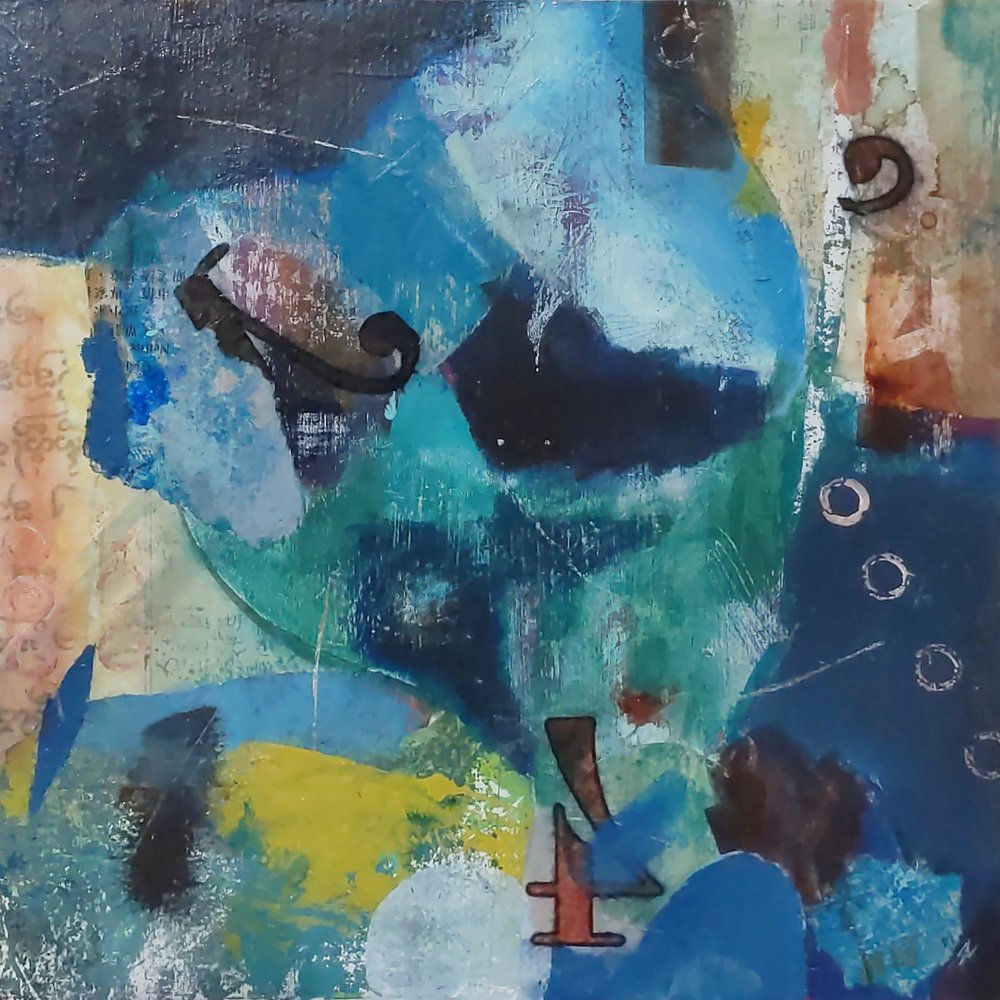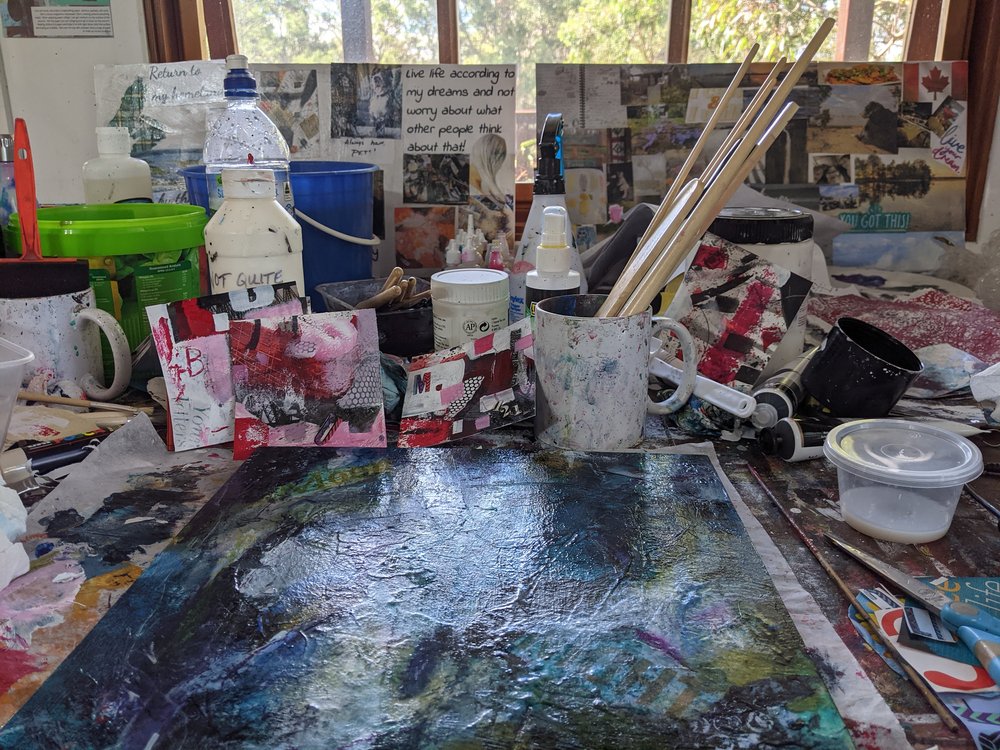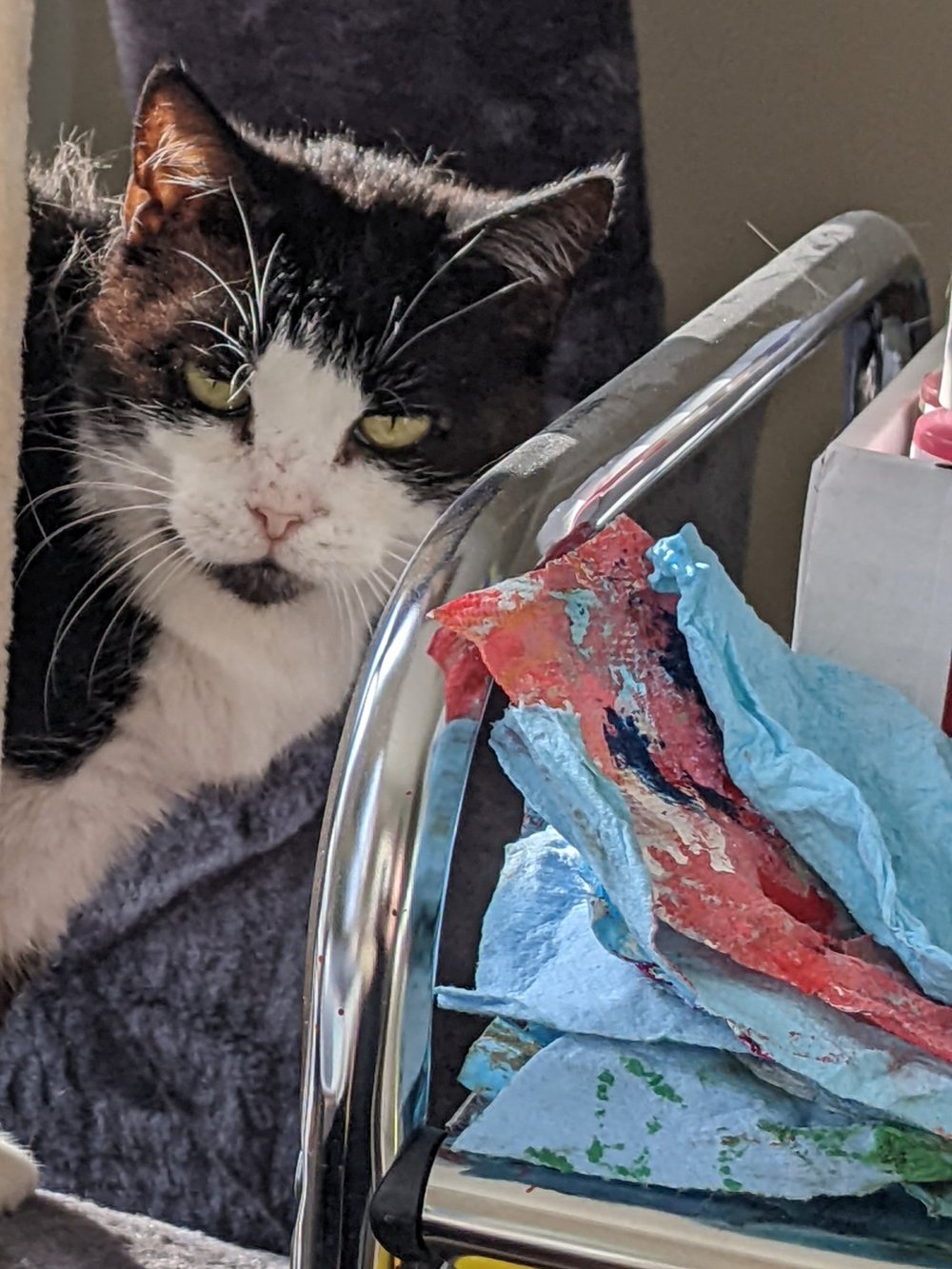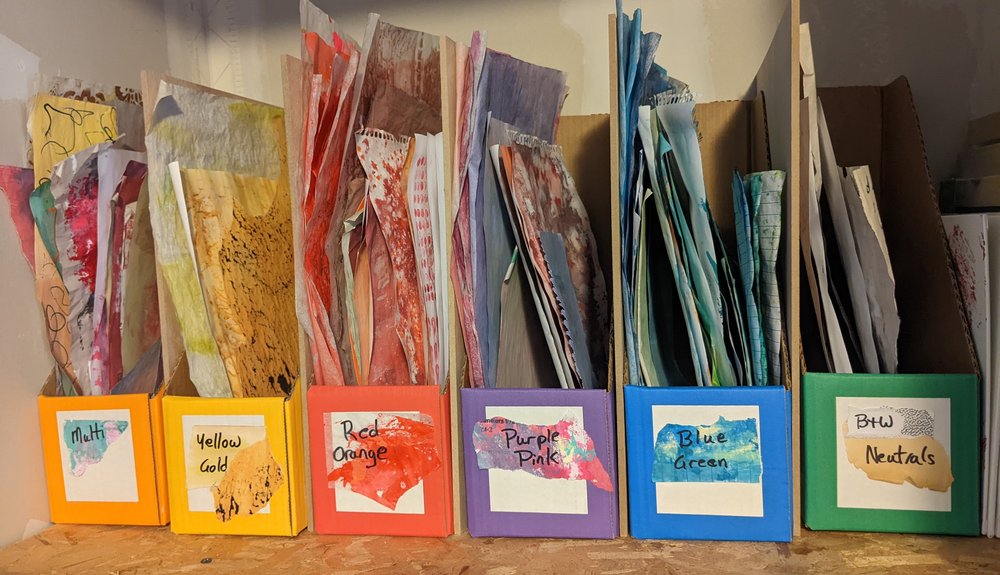As an artist I enjoy creating – that comes with the territory.
As a human I am concerned with dwindling resources, waste and the seemingly irreparable negative impact we are making on our natural environment.
In my personal life I do my best to minimize waste, shop responsibly, use less fuel, recycle… sometimes it seems pointless but I’m doing what I can.
The same applies to my art practice – as a mixed media artist I have an opportunity to use many materials in my work, and also a responsibility to make the best choices for the environment. So here’s a little list of some of the things I do to care for our planet in making “environmentally conscious” art.
“Leftover” Paint

One of my favourites – “Thoughts I forgot to have in the day” started out life as a “throwaway” board
I paint mainly with acrylics, and I recognize that itself may be a concern for some people. While they are water based, there are plastics in the acrylics that could contaminate our water supply, not to mention some of the toxic pigments that are used to give those vibrant colours.
For me, there is no such thing as “unused” or “leftover paint”. I paint on a wet palette – acrylic paint can stay workable for days this way. But sometimes at the end of a painting session I will apply any remaining paint to a “throwaway” board. Just boards I have laying around to make random marks – they never actually are thrown away… After many random applications, the boards have a rich history and I then can finish these as paintings with more layers of paint or collage. The palette paper itself (tracing paper or baking paper) I may also use as collage material.
Brushes

Somewhere in that mess are various containers of water!
Cleaning brushes is one of the biggest concerns. Running paint brushes under a running tap releases an enormous amount of pigment, binders and other chemicals into the water. (A septic tank in my case). There are systems you can purchase to filter out solids from the paint water, however they are tedious and time consuming, and to implement on a scale large enough for me would be next to impossible. So, I’ve developed my own process to minimize paint waste into my septic tank.
-
My brushes do not get washed every day. I put used brushes in a container with a very small amount of water – just enough to cover the bristles. Sometimes brushes stay in there for a week or more. Not the best for the brushes perhaps, but I’ve had some that have taken this treatment for the last 3 years or so, and they are still going strong. I would not suggest doing this if you’re a fan of Kolinsky sable – I use cheap brushes to start with so I don’t feel guilty “abusing” them.
-
If I want to use a brush that is in the “sludge” that builds up in that container, I simply squeeze as much out of it as possible, and then get any remaining pigment/sludge out of the brush with paper towel or by wiping on my desktop (which is covered in water colour paper that later will become finished paintings, like the random boards).
-
I have 4 containers of water on the go at all times.
-
Clean water, clean at the start of each session, emptied into container #2 when it is dirtied.
-
Dirty water – used as a final step for cleaning off that sludge brush and sometimes wetting a clean brush. When too dirty, I pour some into the sludge container and top up with clean water.
-
The sludge – here my brushes sit, waiting to be used or cleaned.
-
The waste – a covered container that I empty the sludge or really dirty water into. I allow the water to evaporate, leaving the paint waste in a solid mass at the bottom that can be sent to landfill instead of the water supply. Not perfect but as close as I can get.
-
-
When I do wash my brushes, I make sure I get as much as I possibly can out of them before sending any water down the sink. This includes using a bit of cheap (cruelty free!) hair conditioner massaged into the brush, and rinsing in my dirty water container. The conditioner does a wonderful job of releasing paint from the bristles into the water. By the time that brush sees running water, it’s basically just rinsing hair conditioner out. Plus the conditioner leaves the bristles very soft!
Paper towels

Studio assistant inspecting the towels
Yes, using paper towels is somewhat wasteful – I try to minimize this as much as I can. All paper towel is used, dried and re-used. I have a stack of used paper towels, some of which have been going for months now – they don’t get thrown away until they are completely hard little scraps. I have considered using rags, and washing them, but then we’re faced with the problem of paint entering the water supply again.
Failed paintings

Collage paper waiting for me
There’s no such thing! I don’t throw away paintings that are unsuccessful – I file them away and finish them later, or tear/cut them up for collage elements. And bookmarks – lots of bookmarks!
I have stacks of unfinished works just waiting to be given a purpose!
